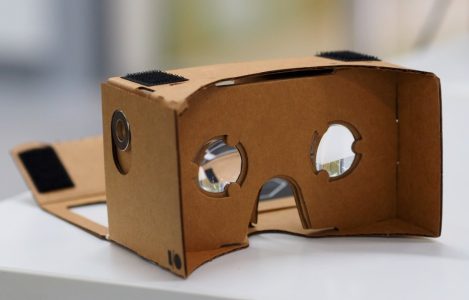In the technical area and in the entertainment industry, VR applications are now almost standard. However, headsets lead to health problems – especially during prolonged use – according to researchers.
VR application in the laboratory
What consequences do typical VR movements have on health? A study participant is measured in the laboratory with sensors.
 Stiff shoulders, headaches or pinched nerves in the form of the so-called carpal tunnel syndrome – users are familiar with such complaints when they sit in front of their computer for a long time. But what happens when you move away from your desktop and enter virtual reality?
Stiff shoulders, headaches or pinched nerves in the form of the so-called carpal tunnel syndrome – users are familiar with such complaints when they sit in front of their computer for a long time. But what happens when you move away from your desktop and enter virtual reality?
A recent study conducted by Oregon State University, Corvallis, examined how typical movements of VR applications can affect health. The scientists’ goal is to provide more safety for users of this rapidly growing technology. This is because VR is being used more and more frequently – not only in games, but also in the education and training of engineers.
One of the most used headsets is HTC Vuve. If you want to read a review you will find one at Vr Porn Stream.
Sensors detect movement patterns
Background: Virtual reality users wear a headset and perform 3-dimensional movements all over their bodies – in contrast to people who work on a normal computer.
Using sensors attached to the participants’ joints and muscles, researchers have recorded typical movement sequences among VR users. They also worked with electromyography. Here, movements of the eyes are recorded.
The study used an Oculus Rift VR headset. Scientists asked the participants to either point at specific points around a circle or to mark a special area with their finger. This experiment was repeated with different parameters, with researchers placing visual elements at eye level, 15 degrees above eye level and 15 and 30 degrees below eye level.
Stress on the musculoskeletal system
 About the results: Regardless of the angle, extending the arm straight outward in just 3 minutes caused shoulder discomfort. With longer use, as is quite common with VR applications, this can lead to major health problems such as “gorilla arm syndrome” – a touchscreen equivalent of carpal tunnel syndrome. According to the New Hackers Dictionary, “the arm feels sore, cramped and oversized.
About the results: Regardless of the angle, extending the arm straight outward in just 3 minutes caused shoulder discomfort. With longer use, as is quite common with VR applications, this can lead to major health problems such as “gorilla arm syndrome” – a touchscreen equivalent of carpal tunnel syndrome. According to the New Hackers Dictionary, “the arm feels sore, cramped and oversized.
Injuries to the rotator cuff, a muscle group at the shoulder joint, are also to be feared in the long term. In addition, the heavy VR headset can increase the pressure on the cervical spine. The neck is strained and pain is imminent.
Positioning the hardware optimally
Another goal of the researchers was to give developers of applications or games hints on the placement of VR objects. For this purpose, the experts concentrated on neck and shoulder movements. They found that the load was greatest if participants had to tilt their head down 15 and 30 degrees. The most extreme postures and muscle activity were observed with VR objects placed at 15 degrees above eye level, as users were forced to constantly stretch their neck and raise their arm. Not surprisingly, this also led to the greatest discomfort.
Job search for engineers
 “Based on this study, we recommend that objects with which people interact more frequently should be closer to the body,” said Jay Kim of Oregon State University. “They should be at eye level and not above or below.”
“Based on this study, we recommend that objects with which people interact more frequently should be closer to the body,” said Jay Kim of Oregon State University. “They should be at eye level and not above or below.”
Great influence on future developments
- Kim’s main goal is to avoid the mistakes of the past. When personal computers appeared in the 1980s and 1990s, people often didn’t think about the risks of overuse until it was too late, Kim explains. This should not be repeated in this form.
- Tech analysts estimate that by 2023, some 168 million people worldwide will be equipped with VR in some form or another.
- A large proportion of the users are gamers, but the practical applications of VR extend to healthcare, the military, and the education and training of engineers.
- In mining, for example, trainees use VR to practice new skills that would be dangerous on site.
“Currently, there are no standards and guidelines for the interaction of the human body with virtual and augmented reality,” Kim criticizes. This makes it all the more important to understand how various parameters of the spatial arrangement can be changed to minimize health risks. This also includes introducing time limits. In some people, prolonged use of virtual reality sickness (VR) can lead to nausea, headaches and fatigue in addition to orthopaedic problems. This is due to contradictory sensory stimuli: Our eyes report a movement to the brain, but the organs of balance do not perceive anything.
